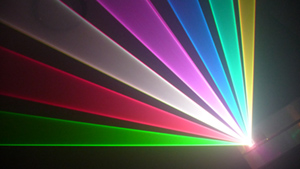
etc., but obviously there is a difference between 650nm red and 670nm red etc, so all of them can't be on #FF0000, but if you knew which nm was exactly at #FF0000 etc. then you might be able to determine where the rest is at???  [/QUOTE]
[/QUOTE]
It will not be a linear 1:1 correspondence as the wavelengths do not shift, but the intensities do, and unless you have a new LCD monitor with LED backlights, the monitors give off bands of color, not monochromatic lines like a laser. There is a great deal of complex research done on matching monitor and printer colors, and the math is complex. It is different depending on the eye's viewing conditions and source power levels as well. for example, photopic vs scotopic viewing.
For a test of passband wavelengths of a typical led based LCD, look here:
http://www.xbitlabs.com/articles/mon...meters_15.html
For P22 standard phosphors, the data is here:
http://us.geocities.com/columbiaisa/crt_phosphors.htm
Some flouro backlight spectrum shots are here, scroll down
http://www.chemistryland.com/CHM107L...ctroscope.html
From what I have posted here, the folks on PL that specialize in color (Tocket et al) will help you with your question. I imagine it will be quite a discussion. I don't want to scare you, but you have opened quite a can of worms.

Steve
Last edited by mixedgas; 10-06-2009 at 07:52.
Qui habet Christos, habet Vitam!
I should have rented the space under my name for advertising.
When I still could have...




 Reply With Quote
Reply With Quote





